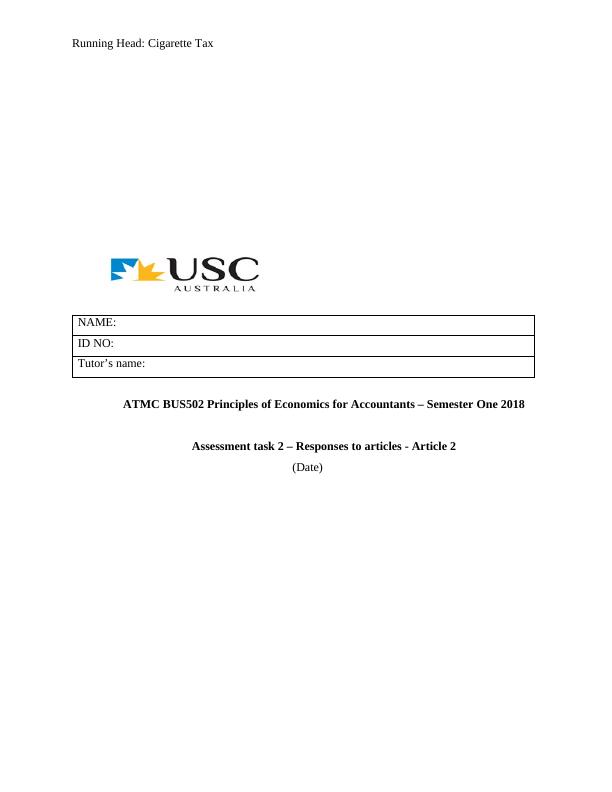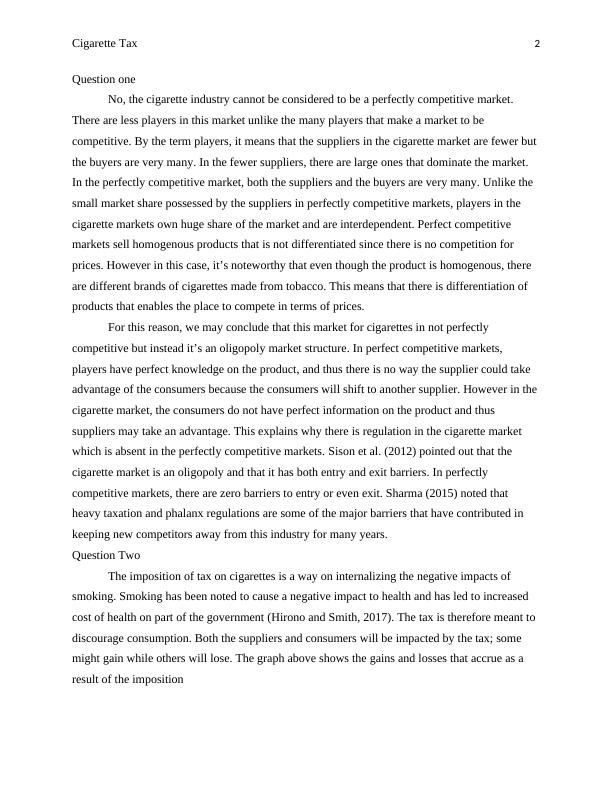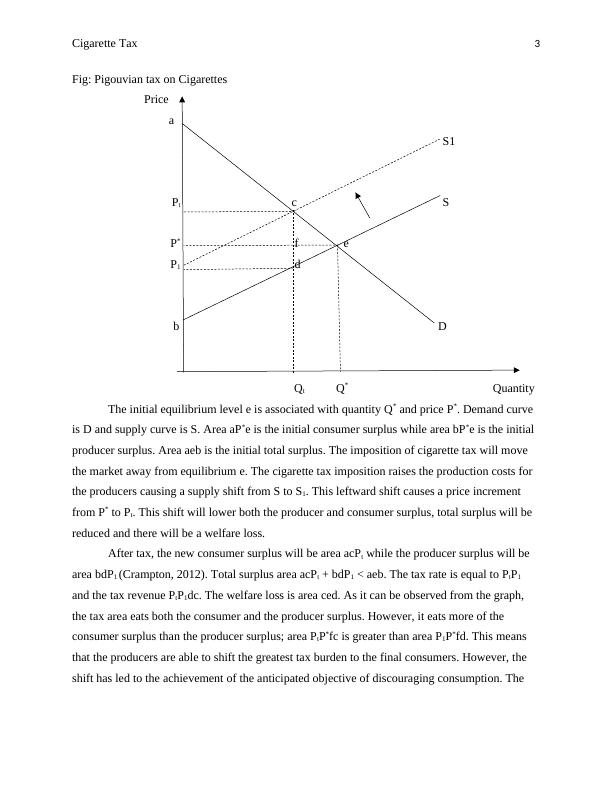Cigarette Tax: Market Structure, Impacts and Elasticity
Answer questions based on the article 'Tobacco tax hikes are great, so long as you’re not a poor smoker'
6 Pages1362 Words122 Views
Added on 2023-06-13
About This Document
This article discusses the market structure of the cigarette industry and explains why it is not perfectly competitive. It also explores the impacts of cigarette tax on both consumers and producers, and how the concept of elasticity affects the level of demand. The article argues against the imposition of cigarette tax, claiming that it lowers the consumer's standard of living, especially for low-income earners.
Cigarette Tax: Market Structure, Impacts and Elasticity
Answer questions based on the article 'Tobacco tax hikes are great, so long as you’re not a poor smoker'
Added on 2023-06-13
ShareRelated Documents
End of preview
Want to access all the pages? Upload your documents or become a member.
Tobacco Market Assignment PDF
|4
|816
|199
Principles of Economics for Accountants Assignment
|7
|1762
|28
Monopolistic Competition and Oligopoly Markets
|10
|849
|321
The Impacts of Implementing Sugar Tax on the Health of Australia
|6
|1076
|400
Assignment on Economics PDF
|10
|1601
|76
The Legal Australian Cigarette Market
|18
|2644
|17



